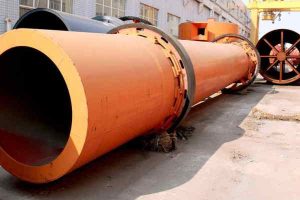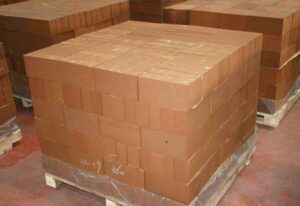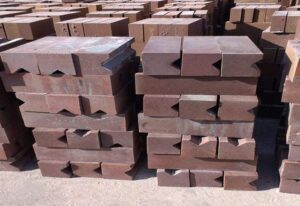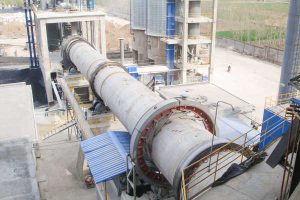Magnesium murstein er mer enn 87% av den sintrede magnesitten som råstoff, produktene av magnesit som den viktigste krystallinske fasen, samt kompositt spinell, kalsium-magnesium peridotitt, magnesium peridotitt, samt en liten mengde glassfase av alkaliske ildfaste materialer.
Magnesium murstein alkalisk motstand og syrebestandighet er svak (spesielt for B2O3 har en sterk flusseffekt, i magnesium murstein noen få tusendeler av B203 in 1200 ~ 1250 ℃ kan gjøre magnesium murstein krype motstand ytelse forringelse). Siden dens matrisebindende sammensetning hovedsakelig er CMS-M2S-systemet.
Derfor, dens varmeledningsevne er god, men forringes med økende temperatur, varmekapasiteten øker med økende temperatur, og ildfastheten er høy (generelt høyere enn 2000 ℃). derimot, dens belastningsmykningstemperatur er bare ca. l550 ℃, and Hang thermal vibration is poor. Some important properties of magnesium brick mainly depend on the characteristics of raw materials, products formed in the mineral composition, and the structure of the apparent rice, while the density of the products is closely related.
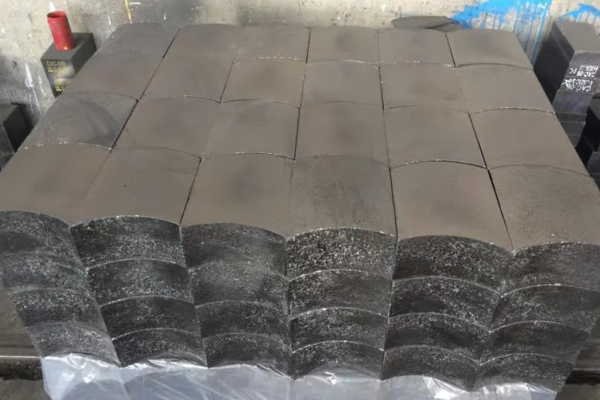
Magnesium silicon brick with raw materials is mainly high silicon type magnesite in Si02 containing Dong up to 5% ~ 11% or so of high silicon magnesite.
1. Raw Materials And Production Process
Magnesia raw materials are crushed into particles and powder, according to a certain ratio of ingredients, add the binding agent mixing into the mud, and then forming, tørking, firing, and other processes made of fired magnesium bricks.
Ordinary magnesium brick firing temperature is generally 1500 ~ 1650 ℃, high purity magnesium brick firing temperature is as high as 1700 ~ 1900 ℃. The chemical combination of the magnesium brick production process is the same, only the use of a chemical binding agent combined without high-temperature firing, only needs appropriate low-temperature heat treatment can be made without burning magnesium brick.
2. Properties of Magnesium Bricks and Precautions for Their Use
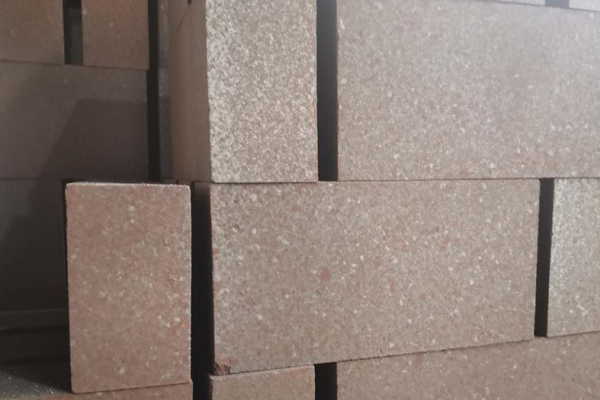
The Composition of Magnesium-Chromium Brick
Magnesium-chromium brick is containing MgO55%-80%, and Cr203 8%-20% av alkaline refractory products. Magnesite and composite spinel XO-Y2O3 is the main crystal phase, of which XO is mainly MgO, FeO, and Y2O3 are mainly Cr203, Al203, and Fe203. The moles of XO and Y2O3 are equal, and the excess Y203 is solidly dissolved in the composite spinel. There is also a small amount of silicate phase (magnesium olivine and calcium magnesium olivine).
Råvarer og produksjonsprosess
Magnesium-chromium bricks with high-quality sintered magnesia and chromite (Cr203 30%-15%, CaO 1%-5%) as the main raw materials.
The production process of magnesium bricks is similar to that of magnesium bricks. Unfired magnesium bricks with inorganic magnesium salt solution as a binding agent. During the firing process, the loose effect is caused by the expansion of MgO and CrO3, Al2O3, or iron oxides when they react to produce spinel. Bricks can be made from pre-synthesized magnesium-mineralized sand, which must be fired in an oxidizing atmosphere of 1600°C or more.
If there is a change like the atmosphere, Fe203 in chromite is affected by redox reactions to form iron oxides of various values. Samtidig, Cr203 is also reduced to produce different valence compounds. In the repeated reaction, causing damage to the brick, so as far as possible to use high MgO low Cr203 products.
According to the products of raw materials and process characteristics, can be divided into fused magnesium-chromium brick, direct bonded magnesium-chromium brick, silicate bonded magnesium-chromium brick, and then combined with magnesium-chromium brick, half and then combined with magnesium-chromium brick, magnesium-krom murstein, pre-reaction magnesium-chromium bricks, and magnesium-chromium bricks and non-burning.
01. Fused Magnesium-Chromium Bricks
Fused magnesium-chromium brick is made of magnesium sand and chromite as raw materials by electro-melting, casting of refractory products.
Characterized by large and isolated pores, dense products, høy styrke, corrosion resistance, and sensitive to temperature changes.
Magnesium-chromium brick chemistry is alkaline, compared with magnesium bricks and chariot bricks, with good resistance to thermal vibration, volume stability at high temperatures, and high load softening temperature.
02. Directly Bonded Magnesium Chariot Brick
Directly bonded magnesium-chromium brick is made of sintered magnesium sand and chromite the production.
Requirements for raw materials with low Si02 content, in the l700 ℃ above the high-temperature firing, so that magnesite and chromite particles form a direct bond.
Typical physical and chemical properties of directly bonded magnesite brick are MgO 82.61%, Cr203 8.72%, SiO2 2.02%, tilsynelatende porøsitet 15%, and bulk density 3.08g/cm3. Compressive strength 59.8MPa, load softening temperature 1765℃, thermal shock resistance 1100℃ water cooling) 14 ganger, flexural strength 8.33MPa.
03. Silicate-Bonded Magnesium-Chromium Brick
Silicate bonded magnesium-chromium brick is enough to sinter magnesium sand and chromite as raw materials, according to the appropriate proportion of coordination, a high-temperature firing system. Product mineral composition for the magnesite, Spinel, and a small amount of silicate.
The production of silicate combined with magnesium and chromium bricks to brick magnesium sand and general refractory grade chrome ore as raw materials, magnesium sand in Si02 <4%, Mg0>90%, chrome ore Cr203 32%-45%, sulfite as a bonding agent, mixing and shaping, firing at about 1600 ℃.
To prevent the products from firing abnormal expansion, the kiln must maintain a weak oxidizing atmosphere. Chemical composition of products: Si02 2.98%-4.50%, MgO 61.75%-72.69%, Cr203 10.04%-14.90%. Physical properties: tilsynelatende porøsitet 18%-21%, room temperature compressive strength 36.1-50.OMPa, load softening temperature 16001640℃.
04. Recombined Magnesium-Chromium Bricks and Semi-Recombined Magnesium-Chromium Bricks
Re-bonded magnesium-chromium bricks are made of electrofused magnesium-chromium sand by re-sintering. Electrofused magnesium-chromium sand sintering is poor, the products for the distribution of pores are uniform fine-grained matrix and have a small crack, and the sensitivity to rapid changes in temperature is better than the fused brick. The high-temperature performance of the product is between the fused brick and the directly bonded brick.
Typical physical and chemical properties of re-bonded MgCr bricks are MgO 68%, Cr203 15%, SiO2 3%, and apparent porosity 14%. Bulk density 3.20g/cm3, compressive strength 52.8MPa, load softening temperature 1740℃, flexural strength 7.86MPa.
Semi-conjugated magnesium-chromium bricks are made from electrofused magnesium-chromium sand and magnesium sand, chromite, or pre-reacted magnesium-chromium sand. The product has some of the characteristics of rebonded MgCr bricks and direct bonded MgCr bricks or pre-reacted MgMn bricks.
Typical physical and chemical properties of semi-conjugated MgCr bricks are MgO 71.58%, Cr2O3 16.45%, Si02 2.75%, and apparent porosity 13%. The compressive strength is 46.7MPa, the load softening temperature is l760℃, and the flexural strength is 9.09MPa.
05. Pre-Reaction Magnesium-Chromium Brick
Pre-reacted magnesium-chromium bricks are produced by using all or part of pre-reacted magnesium-chromium sand. The production cost is lower than that of re-bonded magnesium-chromium brick. Part of the reaction between magnesia-chromite is completed during clinker calcination, so the apparent porosity of the products is lower than that of the directly bonded bricks with comparable composition. High-temperature strength.
Typical composition of pre-reacted magnesium-chromium brick is MgO 62.8%, Cr203 15.3%, Si02 3.25%, tilsynelatende porøsitet 17%, compressive strength 51.3MPa, load softening temperature 1650℃.
06. Unburned Magnesium-Chromium Brick
Unburned magnesium-chromium brick is made of sintered magnesium sand and chromite as raw materials, adding a small amount of chemical binding agent, and heat treatment at lower temperatures, so that the products are hardened and made. Some products can be hardened at room temperature, some need to be heated to the appropriate temperature to make the products have a certain strength, the products are used at high temperatures, the formation of ceramic bonds or high-temperature phase.
The typical composition of unburnt magnesium-chromium bricks is MgO 52.73%, Cr203 18.08%, Si02 5.0%, tilsynelatende porøsitet 10.9%, compressive strength of 58MPa, loading softening temperature of 1520-1530℃.

